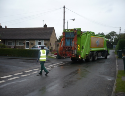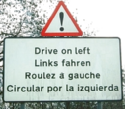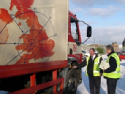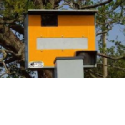Defensive Driver Training Ltd
Defensive Driver Training Ltd is one of the UK’s leading corporate driver training companies. Established in 1989, we provide defensive and advanced driving courses to every UK business sector including banking & finance, the petrochemical industry, pharmaceuticals, electricity & gas generation and distribution, local authorities, NHS Trusts and UK government agencies. Over the past 32 years we have trained more than 250,000 drivers for thousands of fleet operators throughout the UK and Ireland.
Our range of full & half day advance driving courses covers car, van, mini-bus, PCV and HGV drivers. The variety of course topics allows you to build your own driver training programme ensuring relevant content for your drivers and business needs. We have a proven track record of helping individuals and companies to reduce road-risk, improve road safety, and reduce claims rates and insurance costs by up to 65%. An added benefit is reduced fuel consumption, typically 11%, reduced vehicle wear and tear, and reduced third party insurance claims.
Defensive Driver Training Limited is also one of the UK's principal suppliers of driver cpc periodic training. The modular menu of JAUPT approved driver cpc training courses gives you the flexibility to plan a five-year CPC training programme, relevant to your business sector. The result is improved driver safety, reduced costs, improved customer relations and an improved company image. Our trainers come from a variety of backgrounds including the Police, Fire & Rescue Service and Military. They are all good communicators with relevant experience and can pitch the level of training to suit the ability and experience of individual drivers.
Call us now on 01384 442233
-
Six out of 10 drivers failing roadside drug tests
30 July 202060% of drivers pulled over by police are failing roadside drug tests according to new figures released as the Government cracks down on drug driving.
So-called "drugalyser" devices are being used in England and Wales following the 2nd March introduction of new rules in England and Wales aimed at stopping people driving while under the influence of drugs.
And the devices are recording positive results for as many as 56% of suspects who are pulled over, new figures show.
The publication says that officers in South Yorkshire Police have recorded 56% of suspected drug drivers as testing positive, while the figure for Scotland Yard was 45%. Just 5% of those stopped for suspected drink-driving last year failed the breathalyser test.
Cannabis accounted for around 80% of the positive results, according to the Department for Transport.
A Department for Transport spokesman said: "For the first time those driving with drugs in the body are dealt with in the same way as drink drivers."
Transport Secretary Patrick McLoughlin added: "I want to remove dangerous drivers from our roads, including those who think it's acceptable to drive under the influence of drugs. The law has made it easier for police to secure convictions and will help save lives."
-
1793 Die on UK Roads in 2017
30 July 2020Five people per day were killed on UK roads in 2017. This is almost identical to the 2016 figure of 1792. Serious injuries amounted to 24831 which is a staggering 68 people per day. All casualties were 170993 which is 468 people per day. It is widely accepted that most slight injuries are not reported so the real figure is probably considerably higher.
Nevertheless, five avoidable deaths per day has a massive repercussion on the deceased families and friendss. But it does compare favourably with the 17 people per day who were being killed in 1979. Safety technology in cars, safer roads, better medical treatment and higher traffic density have all contributed to the reduction. A more demanding driving test and higher levels of occupational and advanced driver training have also played their part.
By vehicle type, 787 were car drivers or passengers, 470 pedestrians, 349 motor bikers, 101 cyclists and 86 other. Motor bikers remain the most vulnerable road users with a fatality rate of 117% per billion miles traveled compared with 1.9% for car occupants.
-
DVLA launch eyesight awareness campaign
30 July 2020DVLA encouraging drivers to take the "number plate test"
The DVLA is encouraging drivers to take the "number plate test" as a quick and easy way of checking that they meet the minimum eyesight requirements for driving.
The law says that all drivers must meet the minimum eyesight standards at all times when driving. And this includes being able to read a number plate from 20 metres. The easiest way to do this is to take 21 good paces away from a vehicle - about the length of five cars, and then see if you can clearly read the number plate.
Many eye specialists are of the opinion that this test is inadequate as it was introduced over 80 years ago and modern science now offers a far more accurate option to test a driver's eyesight. Research shows that a person can lose up to 40% of their eyesight with out being aware of the deterioration. It is estimated that up to 1.5 million UK licence holders have never had an eyesight test and around 2900 casualties per year are caused by collisions involving poor driver vision.
The NHS recommends that people should have an eyesight test every year. While the number plate test may be the legal minimum, an annual eyesight test is the safest option.
The full test requirements can be found here
-
Five people per day still dying on UK roads
30 July 2020Latest figures show that in the year ending September 2014 there were 1,730 reported road fatalities, a 1 per cent increase from 1,711 for the year ending September 2013.
For the year ending September 2014, there were 24,360 killed or seriously injured (KSI) casualties, a 4 per cent increase compared with the previous year and 192,910 reported road casualties of all severities, 5 per cent higher than the 184,087 for the year ending September 2013.
Part of the reason for these increases over the rolling years is the unusually low number of casualties in the first quarter of 2013. This resulted in a large increase in casualties between Q1 2013 and Q1 2014 with offsetting falls in other quarters.
Motor traffic levels rose by 2.0 per cent compared with the 12 month period ending September 2013. The overall casualty rate per vehicle mile increased by 3 per cent for the same period.












